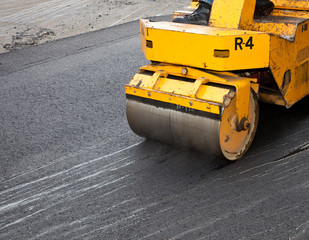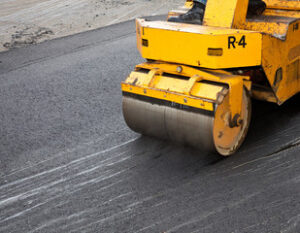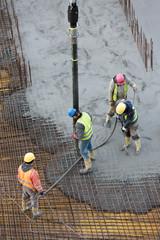Mobility Scooter has grown in popularity as an alternative mode of transportation for people with disabilities and seniors. Their increasing usage calls for a holistic approach to safety from multiple perspectives.

Before you buy a mobility scooter, consider working with a local dealer who can provide personalized guidance and support. They will also schedule a home assessment to make sure the product fits safely into your space.
Steering on a Mobility Scooter is an essential function that needs careful attention. This function is determined by the way in which the rider leans to shift their weight laterally and thus turn the scooter platform relative to its long axis, resulting in the driving forces being applied to the wheels to steer it.
There are many different options for a scooter steering system. Most models use a tiller (a lever that is situated close to the handlebars) which is pulled towards the rider to move forward and away from them to reverse. These levers come in a variety of shapes and sizes. The ones with a longer handle will need to be reached by the fingers of both hands, while those that have a short handle may be easier for one or two fingers to operate.
Alternatively, some scooters have a joystick that is located in the front of the vehicle and which controls both speed and direction. This option is generally preferred by riders who have good upper body strength and dexterity and are used to operating a motor vehicle, such as a car or motorcycle.
The effectiveness of the proposed method was tested by comparing its estimations of the steering and throttle lever operating angles to their actual values in a static state. The test scooter was equipped with both IMUs for the estimations of the operating angles (single IMUs estimation) and wire displacement sensors to measure the actual values (dual IMUs estimation).
The results showed that the estimated angular values were in good agreement with their actual values, with only small errors caused by the acceleration correction of both IMUs. In the dynamic tests, there were also no significant errors observed.
Battery
The battery function is one of the most important aspects of a mobility scooter, as it determines the distance the scooter can travel each day. It also depends on the size and power of the battery, how you drive your scooter (bursts of acceleration will drain it faster) as well as driving conditions and environmental factors like temperature.
Batteries are available in many different forms, with each having its own advantages and disadvantages. The manufacturer will usually choose the most appropriate type of battery for the model he has designed. These are usually GEL or AGM batteries, both of which are lead acid types and offer a maintenance-free alternative to liquid electrolytes. Lithium batteries are the latest development, and they offer a much longer lifespan than their lead-acid counterparts.
Regardless of the battery type, it is crucial to follow proper care routines in order to maximize its function. For instance, you should regularly clean the battery terminals to avoid buildup of dirt or corrosion. It is also advisable to keep the battery in a cool place as it can become damaged by extreme temperatures.
If your battery is having trouble starting, it can be a sign that it is not healthy or is in need of replacement. In such cases, try swapping it with another battery to determine if the problem is with the battery or the scooter model.
It is also a good idea to read the battery storage recommendations provided by manufacturers. These are generally based on the scooter’s temperature range, as overheating can significantly reduce battery efficiency, output and longevity. The best method is to store your scooter fully charged and in a cool, dark and dry location.
Seat
Choosing the best mobility scooter requires considering many different features, including size, number of wheels, base unit, drive train and seat function. The type of tyres, whether pneumatic or solid, will also influence the scooter’s ability to deal with various surfaces.
The seat on a scooter can have a range of adjustments to suit the driver’s specific needs, such as powered height adjustment or a variety of swivel options up to 360 degrees. Other seating features include a reclining mechanism, separate cushions and lumbar supports. Armrests are an important consideration as well, with some models having fixed armrests and others allowing them to flip up for easier side transfers.
Scooters typically have a wheeled platform that supports the feet and batteries, with controls on a column in front of the seat called a tiller. Most have either three or four wheels, although some have five. Some bases incorporate a shroud over the front wheel and drive head, giving the scooter its typical bullet-shaped appearance.
Mobility scooters have better maneuverability than motorized wheelchairs, enabling them to take tight turns and navigate narrow spaces. They can also go over both smooth and rough surfaces, which means they can be used for a wider range of outdoor activities than a standard power wheelchair.
Mobility scooters can be made to match the user’s personal style and preferences, with some manufacturers offering optional extras such as coloured panels and accessories such as lights and mirrors. They can also be disassembled into modular units for transport and storage, with some scooters able to be converted from 3-wheeled to 4-wheeled models or from indoor to outdoor use. This versatility can be a significant advantage, especially for people who travel often and need to be able to easily fit their scooter into the trunk of a car.
Lights
Having a powerful lighting system on a scooter is essential for rider safety, especially during nighttime rides and low-visibility conditions. A well-designed light system can ensure that other riders can see the scooter and vice versa, significantly reducing accidents and injuries.
Scooter lights usually include front headlights, rear brake lights, and side reflectors. The front headlights should be bright enough to illuminate the road ahead without blinding pedestrians and other road users, while the rear brake lights and side reflectors are designed to help drivers and other road users see the scooter from different angles. Scooter lights should also be able to switch between high and low modes depending on the surrounding environmental conditions.
To turn on a scooter’s lights, first ensure that the battery is charged. You should also perform regular maintenance checks to keep the lights functioning optimally. For example, you should clean the lights regularly to prevent dirt from accumulating on them and reducing their brightness. It is also important to check the light bulbs regularly for any signs of damage or wear and tear. In addition, you should use LED lights that are energy-efficient to avoid overusing the batteries.
Boosting your scooter’s speed can improve performance, especially if you’re travelling in hilly areas or inclement weather. To do this, you may want to look into replacing the stock tires with larger ones that are more suited for these environments. In addition, you should check the tire pressure frequently to ensure that it is at the correct level. Finally, it’s a good idea to consult the user manual of your scooter before making any modifications. If you’re unsure about how to make these adjustments, you should consider working with an experienced mobility scooter technician.
Weight
The weight of a mobility scooter is an important factor to consider, especially when considering portability and storage. Mobility scooters come in a variety of shapes and sizes, so it’s important to weigh all of your options before making a final purchase decision.
Lightweight mobility scooters are typically designed with portability in mind, allowing users to disassemble and store them easily. These models are usually less expensive than their heavier counterparts and may offer the best value if you’re looking for a travel scooter. However, these lighter scooters tend to have a lower weight capacity and may have limited terrain capabilities.
Mid-weight mobility scooters are a good choice for everyday use and offer a balance between portability and extra features. These scooters typically have a weight capacity between 100 and 150 pounds, making them suitable for most individuals. Additionally, mid-weight scooters offer sturdy construction and may include accessories such as baskets.
Heavy-duty mobility scooters are built for durability and offer a wider range of terrain capabilities than their lighter counterparts. These scooters typically have a weight of 150 to 200 pounds and are well-suited for individuals who need stability and a durable scooter for frequent travel. Additionally, many heavy-duty models feature extras like a suspension system and a larger battery.
The weight of a mobility scooter is an essential factor to consider when choosing the right model for your needs. By assessing the weight of each option and taking into account your transportation and storage needs, you can find a mobility scooter that fits your lifestyle and budget.










